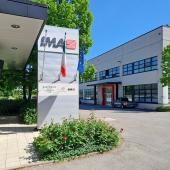Harmonize, with the emphasis on safety
The pharmaceutical market is tackling the issue of serialization, with the objective of univocally tracing pharmaceuticals in order to combat counterfeiting and guarantee safety and traceability of each and every single product along the production and distribution chain. (Reworking from source www.zetes.it).
By 2017 the European pharmaceutical industry will have to conform to directive 2011/62/UE on “forged medicinal products”, defined as an “EC code relative to medicinal products for human use, to prevent forged medicinal products being introduced into the legitimate supply chain, regarding identity, history and origin”. To conform to this directive and to facilitate the localization of forged products within the EU, the pharmaceutical companies of all the European nations have to introduce a serialization system with control at the point of distribution. This system has to be accompanied by measures that ensure the tamper evidence of the packaging of all prescription pharmaceutical products.
Patient safety. Over and beyond the regulations, patient safety must be guaranteed. Recognized the world over and universally applicable, Datamatrix serialization not only improves traceability and helps administrations combat reimbursement fraud, but can also contribute to the fight against counterfeiting. Technological progress and greater access to the same are making counterfeiting ever easier, and for a long time, producing forged pharmaceutical products has been more profitable and less dangerous than drugs trafficking. Guaranteeing the serialization of the products and tracing the serial numbers can protect the supply chain and make product flows more reliable, and this not only in Europe.
A responsible supply chain. The solution proposed by Europe is the introduction of the serialisation of prescription pharmaceuticals starting from the producer, with the systematic control of delivery points (pharmacies or hospitals). This approach offers a compromise between the objective pursued of efficiency (guaranteeing patient safety) and control of costs, in that it avoids extending the process of aggregation between the serial numbers to different logistical units, in a process that would entail extremely high investments and a greater complexity for producers and distributors. The commissioning of the equipment necessary for this serialization all the same entails considerable costs.
For the producers, integrating serialization entails adopting packaging lines with Datamatrix tagging and reading systems, managed by dedicated software that feeds a centralised database. The distributors, for their part, have to prepare scanning and data call-up solutions to enable a regular control of products (ie via call-ups). Lastly, the pharmacist has to be equipped with scanners capable of interrogating the centralised database to ensure whether the product number truly exists, that the product itself has not already been sold or if it belongs to a lot that has been withdrawn.
The need for effective systems Aside the costs, the implementation is liable to be complex. Along high speed lines for example, it is hard to introduce serialization without affecting production. The system, what is more, has to be capable of adapting to the existing lines, each with its own specificity. It is essential to have a flexible, effective and adaptable solution, that can be introduced everywhere. Serialization implies activation costs and constraints, but it definitively increases efficiency and, even more importantly, guarantees the safety of the patient, which is the primary objective..
Link utili
http://www.agenziafarmaco.gov.it
http://www.gazzettaufficiale.it
www.efpia.eu EFPIA - European Federation of Pharmaceutical Industries and Associations

















